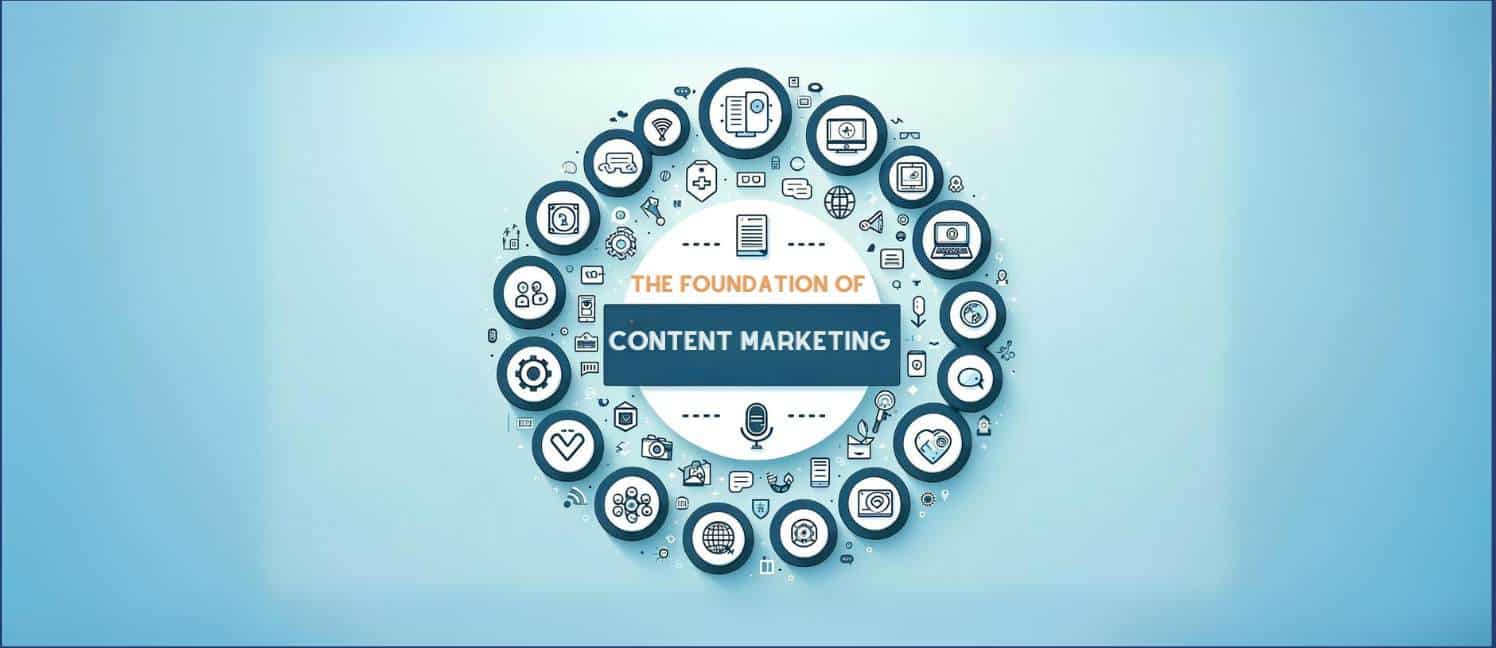On-page vs. off-page SEO: It sounds like contrasting elements, and while different, they’re equally vital for successful search engine optimization. Search engine optimization strategies aim to position your website as high as possible on SERPs (search engine results pages).
Search engine algorithms rank websites based on their value. The engines consider the on-page aspects that affect the users’ experience and off-page elements that help determine your site’s authoritativeness. It means that you can’t overlook on-page SEO and expect better rankings because you’ve invested a lot in off-page SEO, and the opposite is true.
So, you need both, but what does each mean, and how can you effectively incorporate on-page and off-page SEO in your marketing strategies? Herein, we’ll look at each aspect, what they mean, and the primary elements you need to consider as you endeavor to improve search rankings.
On-page SEO
Simply put, on-page SEO entails optimizing aspects within your control. It is strategies employed to optimize your web pages to ensure users find it helpful and enjoy a smooth experience interacting with your website.
On-page SEO techniques are primarily designed to appeal to users. This is from fulfilling search intent to providing visitors with a seamless experience regardless of the device they use to access your website.
Nonetheless, on-page SEO strategies pay attention to search engines. They still strive to be attractive to search engines, which helps sites rank better. Ranking high and providing the audience with a great experience continuously improves your website’s performance, delivering long-term benefits.
Let’s dive into some of the most important on-page SEO aspects.
Site Speed and Responsiveness
Modern internet connectivity is fast, and users want the same when accessing web pages. If your website takes time to load, you’ll experience a massive bounce rate among the signals search engine algorithms consider when ranking sites.
You must invest in strategies to speed up load times, especially considering the content and traffic. Common aspects to pay attention to include:
- Bandwidth plan
- Media files’ sizes
- Number of plugins and ads
- Outdated code
- Poor server performance
- Unoptimized JavaScript and
- Inexistent caching, to name a few
Addressing such issues can help improve site load speed, meaning users won’t have to wait, which often translates to an increased bounce rate. Fast load speed should be complemented by responsiveness across various devices.
Marketers know that most modern traffic comes from mobile devices, meaning they must strategically target them to generate and convert more leads. But how much have you invested in ensuring mobile responsiveness?
You must invest in responsiveness beyond the bare minimum. A responsive site across various screen resolutions and other device properties offers a better experience. Users can quickly access the pages and easily navigate from one point to the next. Such expertise helps lower bounce rates, signaling search engines that your website is reliable across diverse devices.
Core web vitals metrics effectively summarize website load speed and responsiveness and their impact on search ranking and user experience. As Google puts it, Core web vitals metrics measure the real-world user experience for loading performance, interactivity, and visual stability of the page.
Internal Linking
Link building is mainly an off-page SEO strategy, but internal links differ slightly. Internal linking entails linking one page to another on your site. Internal links help users find more content related to what they are interacting with, which allows them to achieve more without leaving the site.
You may have interacted with links in this post that direct you to other blogs or pages within ContentGo. They are examples of internal linking, an on-page SEO that helps us offer you more value while on the website.
Besides improving user experience, internal linking improves ranking by helping search engine spiders find and index new content. Moreover, when internal linking uses correct anchor texts, it helps search engines know more about what to expect from the pages, improving indexing speed and ranking.
Navigation
Imagine being dropped in a complex maze. You have no directions or map; how do you get out? That’s the experience users get when a website is not easy to navigate. This is more so considering diverse users, some interacting with pages with aids.
A logical and well-defined structure is among the factors that search engines consider when ranking sites. Nonetheless, navigation should go beyond such aspects to improve visitors’ experience. You can use various measures to improve site accessibility across the board. Such efforts include setting:
- Tabindex values
- Accesskey values
- Id attributes
- HTML headers
- Skip links and landmark section
Such measures make your website more user-friendly. Visitors can use keyboard shortcuts or assistive technologies to easily navigate the site, translating to a better user experience.
The Content
Content is what comes to most people’s mind when thinking about SEO. Content is an invaluable part of on-page SEO, especially considering its contributions to establishing experience, expertise, authoritativeness, and trustworthiness, which are major ranking factors.
Content quality is determined by usefulness, relevance, uniqueness, and reading ease. This means you need to consistently craft content in line with your target audience‘s needs that’s original and easy to read.
Crafting valuable content requires research focusing on your target audience, competitors, keywords, and other industry-specific elements. The research helps you incorporate target keywords that users often use in creating relevant content that fulfills search intent.
Keyword use enhances your page’s discoverability, while well-written and informative content helps fulfill search query intent, demonstrate your niche knowledge, and establish authority in the industry. The content creation process is resource- and time-intensive, which can overwhelm even the most strategic team.
Many marketers turn to professional services like ContentGo. The professional’s primary focus is content creation, which means they have the experience, expertise, and technology tools to craft high-quality content. You can turn to ContentGo for all your content creation requirements for on-page SEO, including:
Page Titles
You only have a few characters to incorporate keywords and create an eye-catching, comprehensive, and accurate page title. Search engines and users use the page title to establish what they can expect from the page, emphasizing the need for creativity and accuracy for better ranking and more clicks.
Meta Descriptions
These descriptions appear below your page title on SERPs, providing a brief of what the page is about. This means meta descriptions impact click-through rates, hence the need for high-quality descriptions.
Blogs
Blog posts offer a great chance to provide informative content with relevant keywords. The posts can supercharge your search ranking efforts by demonstrating your industry knowledge and ranking for specific keywords.
Content touches on other areas like HTML tags, image and video alt texts, and product descriptions for e-commerce stores, to name a few. Given the repetitive nature of aspects like page titles, your SEO efforts can easily be derailed by concerns like duplicate content and keyword stuffing. This is why more marketers turn to professional services for unique, original, and fresh content for varying on-page and off-page SEO uses.
When thinking about keywords, site friendliness, and page title, among other SEO basics, you are mainly focused on on-page SEO. Technical SEO offers users delightful experiences while making it easier for search engine bots to find and index your pages.
Search engines strive to recommend the best sites to users, which makes on-page SEO critical. But, you need to focus on delivering a positive user experience, not simply looking at SEO to impress search engines and rank better.
Off-page SEO
When looking at on-page vs. off-page SEO, the main difference is that you need to be in more control with off-page like on-page SEO. Off-page SEO entails techniques employed outside your website for improved ranking. Among the top off-page SEO techniques include:
Link Building
Link building is arguably the most notable off-page optimization technique. The strategy relies on backlinks, also called inbound links. These are links from external websites pointing to your pages.
Inbound links are among the notable ranking factors. Quality backlinks pass significant link juice and act as votes of confidence in search engines’ eyes. This improves your domain authority, making ranking higher on SERPs easier.
You can employ various measures in your link-building strategy, including:
Guest blogs
Collaborate with relevant websites and blog owners where you write guest posts and secure a backlink. In return, you also offer a chance for them to guest post on your website. The trick is using quality content and natural anchor text to avoid unnatural links.
Online directory listings
List your site on relevant directories since some may need to pass notable link juice. Local business listings are good starting points, especially considering their impact on your local SEO. You can then find reliable online directories like Google My Business that offer extensive reach.
PR backlinks
Reputable media sites like magazines offer a great opportunity to supercharge your link profile, considering their link equity. You can secure such PR backlinks through interviews, publishing press releases, or enlisting PR digital agency services.
Forum Participation
Participating in relevant form discussion is among the most effective ways to demonstrate your field expertise. It also provides a great chance to earn backlinks, for example, through replies and mentions. You could also cultivate relationships with participants, creating more link-building opportunities.
Fix broken links
Broken links are bad for SEO, which you can use to grow your link profile. You can find broken links on authority sites where you would like to insert your link and offer to fix relevant broken links on their pages. This way, you fix their problem, gain natural links, and make the internet a better place by minimizing those annoying page errors caused by broken links.
Natural external links offer more than improving your domain authority and search engine rankings. Backlinks expand your reach, driving more organic traffic to your website. They also help enhance brand awareness and foster healthier relationships with varying parties like blog owners and third-party sites, which comes in handy in your SEO quests.
Social Media Presence
Social media channels offer access to a rich pool of potential customers. Besides running ads and other social media marketing strategies, you can use your profiles to improve search ranking. Crafting quality and sharable content and actively engaging users is the best way to approach social media for SEO.
Social media activity may be packed with something other than do-follow links that can significantly enrich your link-building efforts. Nonetheless, social signals are valuable off-page SEO factors. Those shares, likes, and comments indirectly impact your SEO. The social media engagements also contribute to your brand’s online presence and reputation.
Actively engaging users on social media platforms can make your brand more discoverable. This can help drive more traffic to your website. The growing traffic signals the search engine bots that your website offers value. This is an off-page SEO contribution that can significantly boost your search rankings.
Influencer collaborations are among the creative ways to boost your social media efforts. Influencers offer a chance to tap into their massive following, which can drive more traffic to your social media profiles and site.
When properly executed, social media marketing can generate notable social signals and drive more traffic to your website. This translates to better search ranking, with the bonus of securing more sales since such traffic is loaded with qualified leads. Moreover, you amass a significant loyal customer base for repeat business.
Off-page SEO relies on external factors that are not within your control. It also usually takes longer to notice results, which temps many marketers to employ hacks like engaging in link schemes or buying backlinks. Such hacks may work in the short term, but when search engine bots catch up, the penalties are severe, which can significantly harm your website’s ranking.
On-page vs. Off-page SEO Relationship
On-page vs. off-page SEO all work towards one ultimate goal: improving search ranking. One can only work well, if at all, with the other. Nonetheless, on-page SEO offers more control and is often considered the most important. But this doesn’t mean you should overlook off-page SEO.
Effective on-page SEO ensures that your website offers users a great experience. On the other hand, off-page optimization expands your reach and improves domain authority, which helps your website rank better.
The better user experience and improved ranking translate to better results. This is because you’ll be easily discovered, and the traffic to your site will stay long enough and keep coming back. The result is enhanced lead generation and conversion rates, which means you have a successful SEO strategy since such achievements are marketing’s ultimate goals.
Content quality is the common on-page vs. off-page SEO denominator that can’t be emphasized enough. Crafting high-quality content for on-page and off-page SEO can be daunting, but not when you turn to ContentGo.
ContentGo’s diverse team and top technologies ensure you only employ the best content across all your SEO strategies. This is free of burdening your team with all the nuances of content creation. Register today and let ContentGo enhance your on-page vs. off-page SEO strategies’ efficiency and effectiveness.












